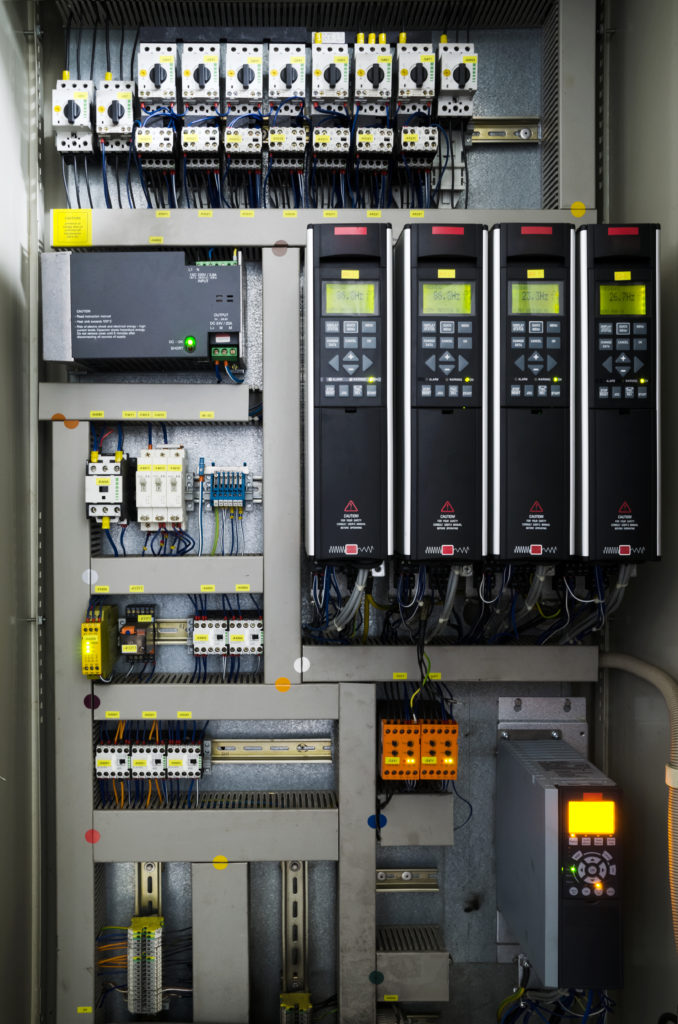Modern Variable Frequency Drives come equipped with sensors, signaling circuits and logic that can tell a user what is wrong in the case of a failure which is a very useful feature. The built-in ability to detect failures is very important towards preventing possible catastrophic machine breakdown and potentially very expensive downtime. Thus, motor controllers that contain robust and reliable safety features are important to machine builders.
On most Variable Frequency Drives there is a display which reports faults back to the user. This feature is usually displayed on the VFD’s HIM Module (Human Interface Module) or some other style of display that will communicate what kind of trouble is occurring in the motor control system. While most faults are pretty self-explanatory, some can be a little confusing to someone not experienced with VFD terminology. Here are a few examples of often misunderstood fault codes and what they really mean.
Saturation Fault
What some think it means, water got in my VFD! Oh no!
What it really means:
We have customers report this fault a lot and some do think that it has to do with literal “saturation” with moisture. No, there is no “water sensor” that is causing this fault. Electrically saturation means that the system is detecting a level of voltage or current that is beyond what it is rated for. Most often timesthis fault is related to the IGBT or Gate Circuitry within the drive either failing or detecting higher current than it is designed to manage.
Imbalance Faults
What some think it means: My motor or machine is imbalanced!
What it really means:
This is one that tricks those that are not necessarily technically inclined or have much knowledge of electronics in general. Most folks think of an imbalance as a mechanical thing only; like imbalanced wheels of a car causing vibration as one example. In a VFD an imbalance fault usually comes in the form of a Phase imbalance which means that one or more of the input voltage phases are not in sync and the other phases must compensate for it which can lead to the system overheating. In other words what the system lacks in voltage is made up for in amperage – which translates to a possible failure. Modern VFDs are designed to detect this condition and shut down.
Temperature Fault or Under Temperature
What some think it means: My drive got too hot!
This one can be a bit confusing. There are two main circuits in a drive that detect temperature and are designed that when the temperature is too high, the drive will protect itself or external components by shutting down. Where things get confusing for users is determining what kind of temperature fault they are getting. Some will assume it is always the motor and some will assume it is always the drive. The circuit that determines if the motor is overheating is connected to what is called a Thermal or Thermistor circuit. This is a small two wire thermal resistor that is designed to open up when the motor gets to hot. This component is attached very closely to the motor windings, the leads of which are wired to the drive control board which allows the VFD to detect for an overheat failure in the motor. There is a similar circuit that is tied to the output modules of the drive itself to prevent an overheat as well. In addition, the drive may trip on a temperature fault if one or more internal fans become compromised. Most VFD’s will have numerous different codes tied to each type of temperature fault and where they originate to allow for troubleshooting.
Be sure to visit us online at www.gesrepair.com or call us at 1-877-249-1701 to learn more about our services. We’re proud to offer Surplus, Complete Repair and Maintenance on all types of Industrial Electronics, Servo Motors, AC and DC Motors, Hydraulics and Pneumatics. Please subscribe to our YouTube page and Like Us on Facebook! Thank you!
